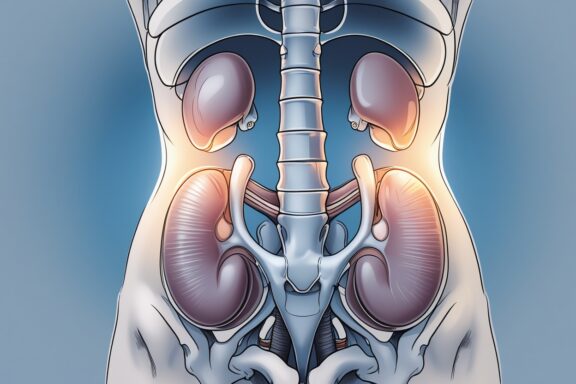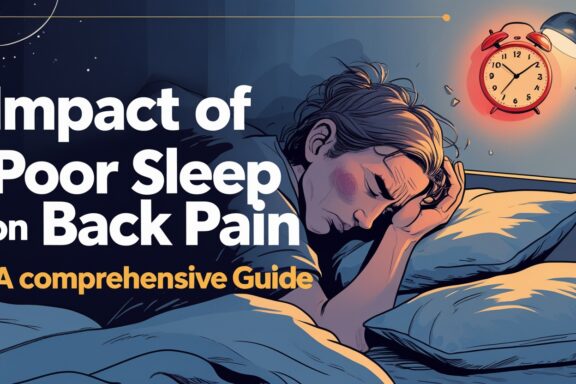Lower back pain can be a real pain in the back—literally. But before you reach for the painkillers, there's a simple, effective, and drug-free solution: ice therapy. Read on to find out how to use ice therapy for lower back pain relief like a pro.
If you’ve ever woken up with a stiff lower back, you know how frustrating—and downright debilitating—it can be. Whether it’s from a long day at the desk, an intense workout, or just plain old life, lower back pain is a common issue that can throw a wrench into your daily grind. But here's the good news: you don’t always need medication or a trip to the chiropractor to feel better. Sometimes, the answer is as simple as reaching into your freezer. Yep, we’re talking about ice therapy.
Ice therapy—also known as cryotherapy —is a tried-and-true method for reducing inflammation, numbing sore tissues, and giving your back the break it needs to start healing. And the best part? It’s easy, affordable, and something you can do at home without any fancy equipment. So, if you're wondering how to use ice therapy for lower back pain relief, stick around. We’ve got the lowdown on everything from the science behind it to the dos and don’ts that’ll keep you on the right track.
What Exactly Is Ice Therapy and How Does It Work?
So, you might be asking yourself, “Is putting ice on my back really going to help?” The short answer: absolutely. The longer answer involves a little science. When you apply cold to an area, it causes the blood vessels to constrict, which reduces blood flow to the affected area. This helps bring down swelling and inflammation—two major culprits behind pain.
But that’s not all. Ice also acts as a natural numbing agent. Think about it: when you bite into something cold, your mouth goes a little numb, right? Same idea here. The cold interferes with how your nerves send pain signals to your brain, which can provide almost instant relief. It’s like hitting the mute button on your pain.
Now, you might be wondering if this is just a quick fix or if it actually helps with long-term recovery. According to the American Academy of Orthopaedic Surgeons (AAOS), ice therapy is particularly effective for acute injuries—like strains or sprains—that cause swelling and inflammation. While it may not “cure” chronic conditions like arthritis or degenerative disc disease, it can still provide meaningful pain relief and improve mobility.
When Should You Use Ice Therapy for Lower Back Pain?
Timing is everything when it comes to cryotherapy. If you’ve just pulled a muscle or tweaked your back while lifting something heavy, ice is your best friend. It’s especially useful in the first 24 to 48 hours after an injury, when inflammation is at its peak. Using ice during this window can help reduce swelling and prevent further irritation.
But what if your pain isn’t from an injury? Maybe you suffer from chronic lower back pain due to poor posture or a sedentary lifestyle. In that case, ice therapy can still be beneficial—particularly after a long day of sitting or engaging in physical activity. It’s a great way to soothe sore muscles and give your body a chance to reset.
However, it’s important to note that ice isn’t a one-size-fits-all solution. If your pain is caused by stiffness or tightness—like in the case of chronic muscle tension—heat therapy might be more effective. So, when in doubt, ask yourself: Is my back swollen and inflamed, or is it tight and stiff? That’ll help you decide whether to go cold or warm things up.
Step-by-Step: How to Use Ice Therapy for Lower Back Pain Relief
Alright, so you’ve decided to give ice therapy a shot. Now what? Here’s a simple, no-nonsense guide to using ice for your lower back like a pro:
- Grab the Ice – You can use a reusable ice pack, a bag of frozen veggies (peas work great), or even make your own by filling a plastic bag with water and freezing it.
- Wrap It Up – Never apply ice directly to your skin! Wrap it in a thin towel or cloth to avoid frostbite or skin irritation.
- Target the Area – Lie down or sit in a comfortable position and place the ice pack on the painful area of your lower back.
- Time It Right – Apply ice for 15 to 20 minutes at a time, every 2 to 3 hours during the first couple of days after injury.
- Take Breaks – Give your skin a rest between sessions to avoid overcooling or irritation.
Pro tip: If you’re dealing with lower back pain on a regular basis, consider investing in a gel ice pack that conforms to your body shape. It’ll make the process way more comfortable and effective.
Common Mistakes People Make with Ice Therapy (And How to Avoid Them)
Let’s be real: ice therapy seems pretty straightforward. But there are a few common pitfalls people fall into that can actually do more harm than good. For starters, some folks leave the ice on for way too long—like, an hour or more. Big mistake. Prolonged exposure can damage your skin or cause nerve irritation.
Another blunder? Applying ice directly to bare skin. We know we mentioned it earlier, but it bears repeating: always use a barrier like a towel. Otherwise, you risk getting a cold burn or worse.
And here’s a sneaky one: using ice therapy for chronic pain without knowing if it’s the right approach. As we said earlier, ice works best for inflammation, not stiffness. If your back feels tight and achy rather than swollen and hot, you might want to reach for a heating pad instead.
Also, don’t forget to take breaks. Your body needs time to warm up and recover between sessions. Overdoing it can lead to decreased circulation and even more discomfort.
Frequently Asked Questions About Ice Therapy for Lower Back Pain
Q: Can I use ice therapy every day?
A: Yes, but with limits. You can ice your lower back several times a day, especially during the first few days after an injury. Just stick to 15–20 minutes per session and give your skin a break in between.
Q: How long before I see results?
A: Most people feel some relief within the first 24 to 48 hours. However, if pain persists beyond a few days or gets worse, it’s time to see a healthcare professional.
Q: Can I sleep with an ice pack on my back?
A: Definitely not. Sleeping with ice can lead to frostbite or nerve damage. Always set a timer and remove the ice before dozing off.
Q: Is it safe for people with diabetes or circulation issues?
A: If you have diabetes or poor circulation, consult your doctor before trying ice therapy. Reduced sensation or blood flow can make cold therapy risky.
Q: What’s the best ice pack for lower back pain?
A: Look for a flexible, wrap-around pack that conforms to your body. Reusable gel packs or wraps with adjustable straps are ideal for targeted relief.
The Dos and Don’ts of Cryotherapy for Your Lower Back
Let’s break it down into a quick list so you don’t miss a beat:
Dos:
- ✅ Do wrap the ice in a towel or cloth.
- ✅ Do apply it for 15–20 minutes at a time.
- ✅ Do use it within the first 48 hours of an injury.
- ✅ Do alternate with heat therapy if needed (after the acute phase).
Don’ts:
- ❌ Don’t apply ice directly to the skin.
- ❌ Don’t ice for more than 20 minutes at a time.
- ❌ Don’t fall asleep with an ice pack on.
- ❌ Don’t use ice therapy for chronic stiffness without consulting a professional.
Final Thoughts
So, there you have it—your go-to guide on how to use ice therapy for lower back pain relief. From understanding the science behind it to avoiding common mistakes, you’re now equipped with all the know-how you need to tackle back pain the smart way.
Whether you're dealing with a fresh injury or just the everyday aches that come with life, ice therapy is a powerful, natural tool that shouldn’t be overlooked. It’s inexpensive, easy to do, and backed by science. Just remember to use it wisely, listen to your body, and don’t hesitate to reach out to a professional if things don’t improve.






